AMD Phenom X3 8750 Review
AMD Phenom X3 8750
More power than dual-core and cheaper than quad-core, is triple-core the perfect middle ground?
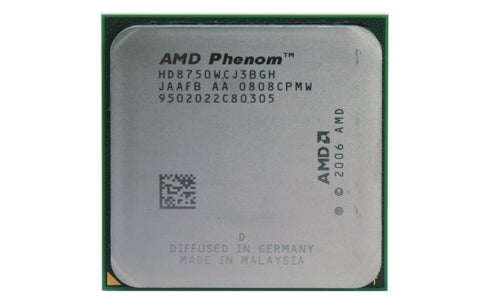
Verdict
Key Specifications
- Review Price: £130.00
When dual-core processors hit the market a few years ago they were an absolute revelation. No longer would running one intensive application, like a video editor or virus scan, render your PC otherwise unusable, now you could merrily perform multiple tasks at once seemingly without the slightest interruption. For the vast majority of computer users, this was the single biggest advancement in usability in computers since the invention of the GUI.
Since then dual-core CPUs have become the defacto standard (you’ll be hard pushed to buy a new computer that uses a single-core processor anymore) and now quad-core is the latest must-have. However, quad-core processors are still relatively expensive – the cheapest you can get is the AMD Phenom X4 9550, which costs a fairly substantial £126.89 – and some consumers, while they would quite happily have the extra cores, don’t feel the cost is justified when a decent dual-core like the Intel E2200, costs as little as £52.86. So, logically, there’s a gap in the market for a triple-core processor that will give the user even more headroom for multi-tasking than a dual-core yet not cost quite as much as a quad-core. 
Of course, the market isn’t quite as simple as that because many users still require a dual-core CPU that will perform one or two tasks as fast as possible, so you can still get very fast dual-core processors costing upwards of £200. However, this usage case is becoming rarer and rarer as more and more software is optimised to use all these slower cores together to run single applications faster and people get more used to multi-tasking on their PCs. Essentially, for the majority of users, the more cores you can afford, the better.
Thus goes the path of logic that AMD has followed and today brings us the Phenom X3 8000-series of processors and specifically the 8750 that we’re reviewing today. These processors are, as the name suggests, triple-core versions of the Phenom X4s. However, all is not as it seems with these new chips.
The X3 line of processors are in fact your bog standard Phenom X4s but one of the cores has been disabled. Now it’s fair to assume that AMD is only creating X3s from X4s that have come off the production line with a fault in one of the cores – rather than butchering perfectly good X4s. In which case, one also has to assume that AMD may still be having problems with its production methods. However, neither AMD nor Intel is ever willing to reveal specific figures about the yield of its production processes, so it’s just as likely that Intel has as many faults in its chips but the faulty ones are just binned instead. Also, because Intel’s chips are not native quad-core but rather two dual-core chips stuck together, Intel can potentially afford to ditch the whole dual-core chip if there is a fault in one of the cores. Whatever the answer, this is all rather academic and it shouldn’t fundamentally affect you buying decision.
The Phenom X3 line, then, has all the same features as the Phenom x4s, including the same amounts of on-die cache memory and 1.8GHz HyperTransport link. They’re also made using the same 65nm Silicon-On-Insulator manufacturing process and, because AMD doesn’t want to reveal the exact number of transistors that each part of the processor uses, the transistor count is still officially given as ‘approximately 450 million’ but this includes the transistors used in the disabled core. 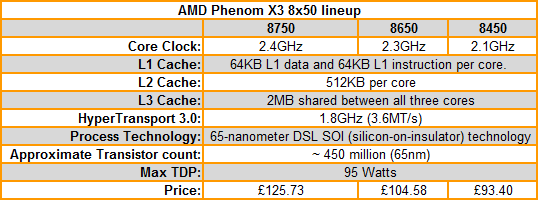
Three processors have so far been launched and they differ only by their clock speed – so there’s no multiplier unlocked Black Editions, for instance. First is the 8450, which runs at 2.1GHz using a fixed 10.5x multiplier, next up is the 8650 running at 2.3GHz with a 11.5x multiplier, and finally the 8750 that we’re looking at today, which ticks over at 2.4GHz by using a 12x multiplier. They all conform to the same 95W TDP, so should run happily on any AM2 motherboard (which isn’t the case with the faster X4 CPUs, which have a TDP of 125W).
The interesting, and slightly worrying bit for AMD, is where these processors currently fit in terms of price. At the time of writing, the X3 range starts at £95.75, and goes all the way up to £125.73. When you consider that a quad-core Phenom X4 9550 costs £123.36, and even an Intel Q6600 costs around £133.89, these prices simply aren’t competitive. They’re not far off, and dropping prices across the range by £15-£20 will make all the difference, but right now the X3s are fighting a losing battle. Still before we write them off completely, let’s have a look at how they perform. 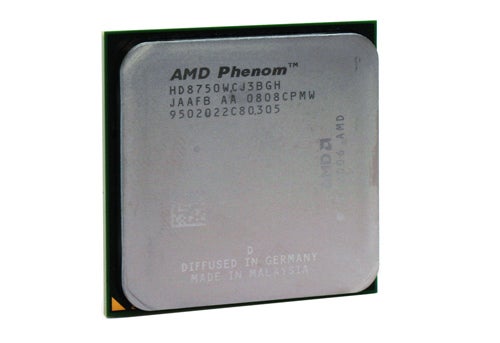
For testing we’ve compared to a couple of Intel’s dual-core CPUs, namely, the E4300 and E6700. As it happens, neither of these are actually available to buy new today. However, they are roughly equivalent to the E4500 and E6750 that currently retail for £74.72 and £111.50 respectively. We’ve also thrown in results for one of AMDs mid-range dual-core’s, the Athlon X2 5200+, which can be found for £64.26. At the other end of the scale we’ve also included the Phenom X4 8750 and Intel’s Q6600, which are both quad-core CPUs retailing for £150.39 and £133.89, respectively. Finally, we’ve gone all out and included the fastest consumer CPU you can currently buy, the Intel QX9770, which is running at a stock speed of 3.2GHz and retails for an eye-watering £898.76.
As always we tried to create as even a playing field as possible so the only limiting factor for each setup is the CPU itself. Both test systems used western Digital Raptor 150GB hard drives and nVidia 8800 GTS 640 graphics cards. However, we used DDR2 memory with the AMD CPUs, while the Intel chips were accompanied by DDR3 and of course the two motherboards for each platform were also different.
”’Test Setup”’
”’Common Components:”’
* nVidia 8800 GTS 640MB
* 150GB Western Digital Raptor
* Microsoft Windows Vista Home Premium 32-bit
”’Intel Specific Components:”’
* 2GB Corsair TWIN3X2048-1333C9 DDR3
* Asus P5E3
”’AMD Specific Components:”’
* 2GB Corsair Dominator TWIN2X2048-8500C5DF DDR2
* MSI K9A2 Platinum
Testing started with our usual quartet of Photoshop batch processing, VirtualDub video encoding, WinRAR file compression, and LAME mp3 encoding and we also ran the single core test in Cinebench. These tests are all single-threaded versions of the programs so they are only using one core at a time, which gives a good idea of raw clock-for clock performance of the CPUs.
Next we tested the multithreaded versions of WinRAR and LAME and also ran the multi-core test in Cinebench to see how effectively the CPUs distribute the computing load across multiple cores. Finally, we did a spot of game testing using Counter-Strike: Source, Enemy Territory: Quake Wars, and Crysis. Each test was repeated until a consistent score was achieved so the results we’re showing are truly representative of the performance our systems gave under our tests.
Once initial tests were finished we set about seeing whether we could overclock the 8750 and find out if it was actually a lamb dressed as mutton, so to speak.
Being as the 8750 is multiplier locked, the only overclocking we could do revolved around how far we could push the HyperTransport (HT) base frequency, which by default is set at 200MHz (12x200MHz = 2.4GHz). Starting with default voltages we very quickly hit a brick wall; because increasing the HT frequency also affects the memory speed, we had to reduce the memory multiplier (reducing the memory speed from 1066MHz to 800 MHz) before we could raise the HT frequency at all. Considering this is a problem Leo also encountered while reviewing the Sapphire PC-AM2RX780, it’s fair to assume it’s common across all Phenom setups.
Once we got passed this little set back we left all the voltages as default and started cranking up the HT frequency and got straight up to 240MHz (2.88GHz) without too much trouble. However, pushing much further required boosting the core and HyperTransport voltages. Unfortunately, while we could push further by upping the voltages, we never seemed to be able to maintain stability and eventually we settled on our original maximum of 2.88GHz for testing.
”’CPUs Tested”’
* AMD Phenom X3 8750 @ 2.4GHz (12 x 200MHz)
* AMD Phenom X3 8750 @ 2.88Hz (12 x 240MHz)
* AMD Phenom X4 9850 Black Edition @ 2.5GHz (12.5 x 200MHz)
* AMD Phenom X4 9600 Black Edition @ 2.3GHz (11.5 x 200MHz)
* AMD Athlon X2 5200+ @ 2.6GHz (13 x 200MHz)
* Intel Core 2 Quad QX9770 @ 3.2GHz (8 x 400MHz)
* Intel Core 2 Quad Q6600 @ 2.4GHz (9 x 266MHz)
* Intel Core 2 Duo E6700 @ 2.66GHz (10 x 266MHz)
* Intel Core 2 Duo E4300 @ 1.8GHz (9 x 200MHz)
Looking first at the single core results, it’s clear that the 8750’s relatively low clock speed hampers its performance and it’s soundly beaten by the faster clocked dual-core CPUs from both Intel and AMD. Once overclocked it does catch up with the rest of the pack but then all the other CPUs on test can also be overclocked to pull further ahead. Clearly then if performance of single threaded programs is your priority, the X3s aren’t the best choice.
Multithreaded applications, on the other hand, are where the X3 really shows its prowess – in all but the mp3 encoding test the X3 is markedly faster. There is one caveat to consider with these results, though. As yet some multithreaded software is not able to run properly on three cores because it has been designed to allow for multiples of 2 cores, i.e. 1, 2, 4, 8, etc. Of course most software will be retrofitted to enable triple-core optimisation but for the time being you may find your favourite program doesn’t get the performance boost you were expecting. 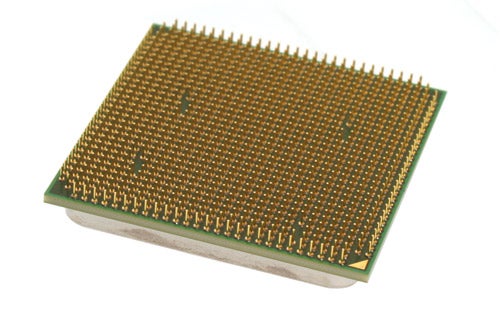
The final point to consider is that of multi-tasking. It’s all very well talking about multi-threaded software but for many people the advantage of three cores over two is simply that doing many things at once will be quicker. I for one often push my aging dual-core work PC to the limits by having tens of programs running at once so dropping a few megahertz in raw speed but having an extra core would be a tempting proposition for me.
Unfortunately, though, there’s no getting past the price. At their current prices the X3 range just aren’t competitive. Were the 8750 to be around £110 then it would be a good choice and if AMD could push it down as far as £100 then it would come highly recommended.
”’Verdict”’
AMD’s triple-core X3 Phenom CPUs offer an interesting alternative to the traditional dual- and quad-core products. However, the price is just a little bit too high for us to recommend them right now. Once they hit £100-£110, though, then you’re looking at a great buy.
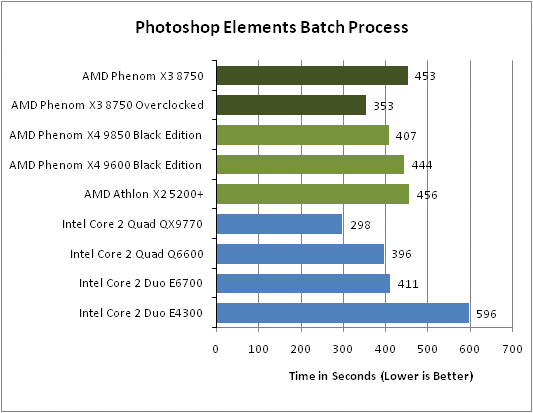
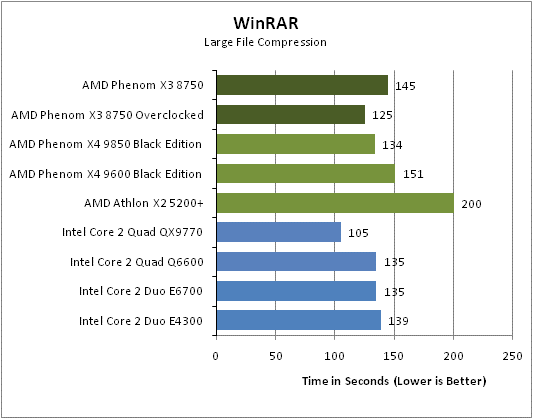
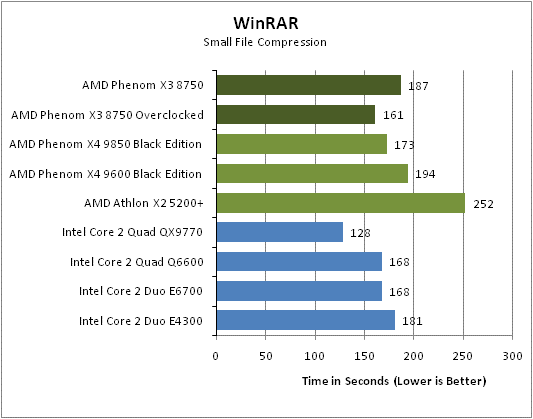
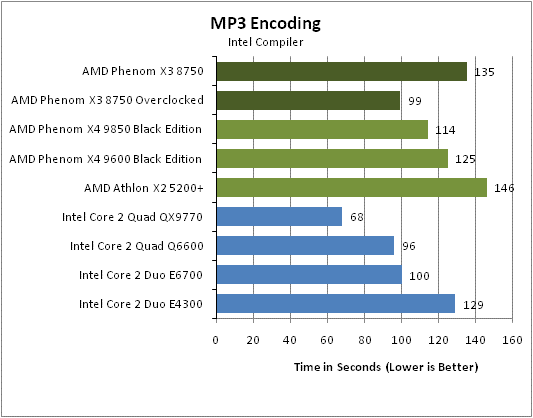
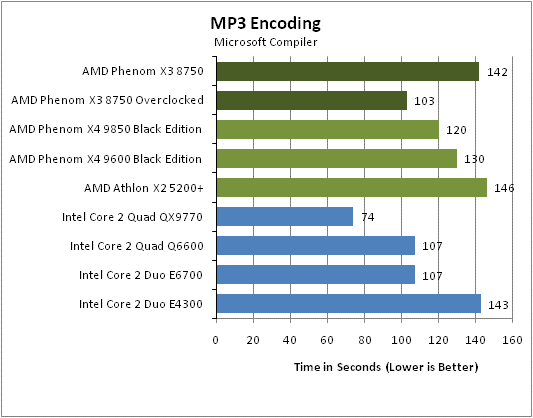
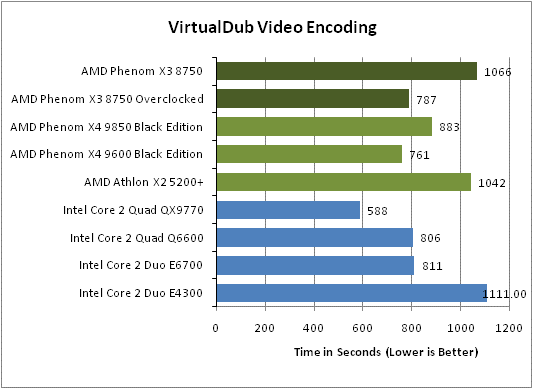
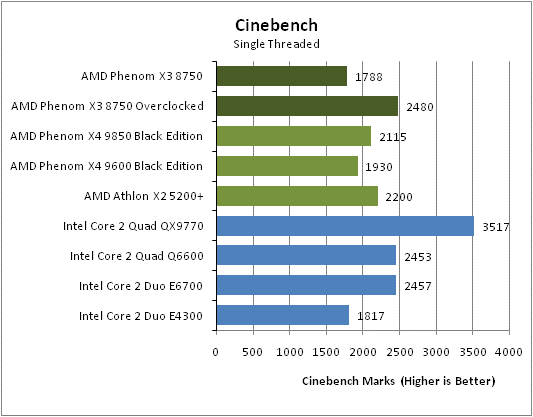
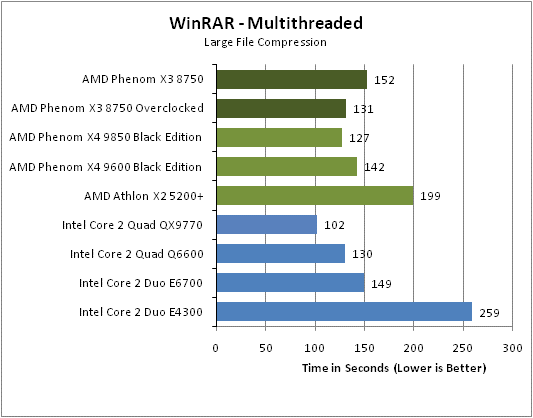
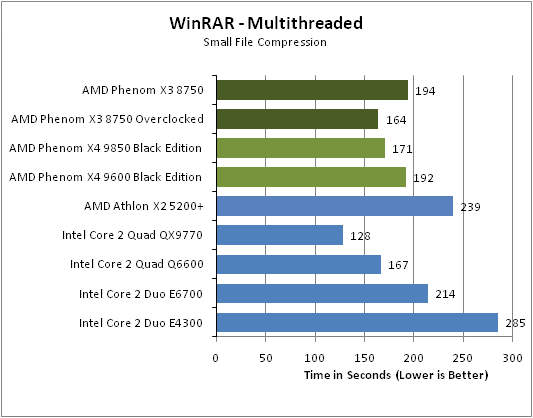
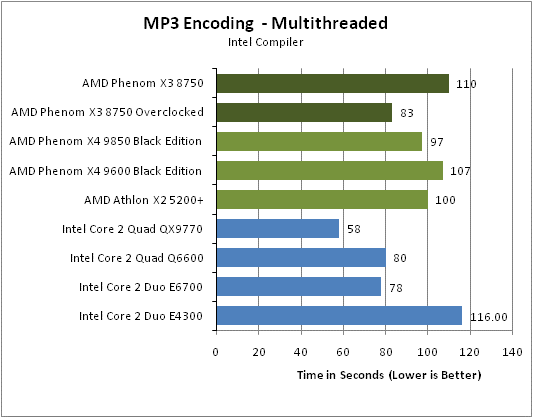
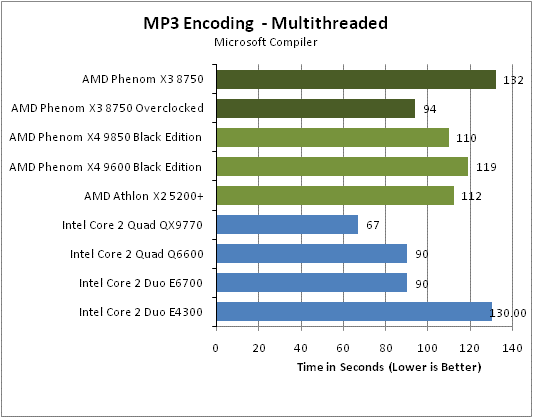
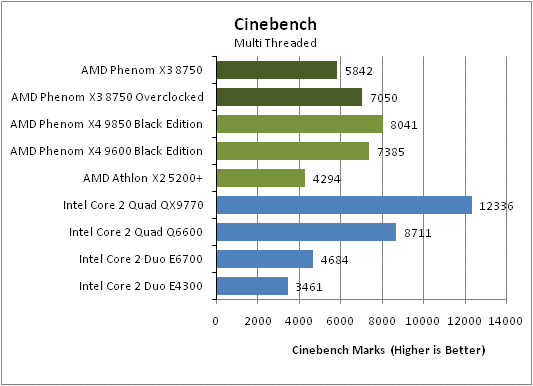
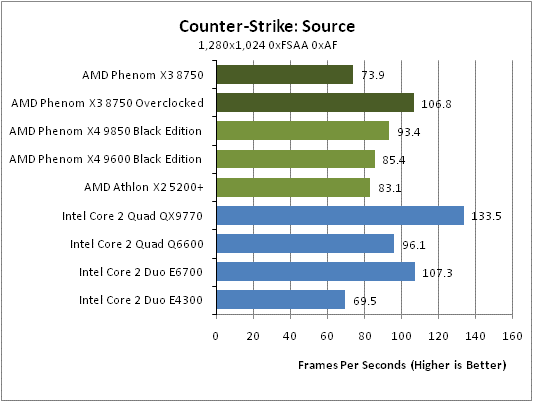
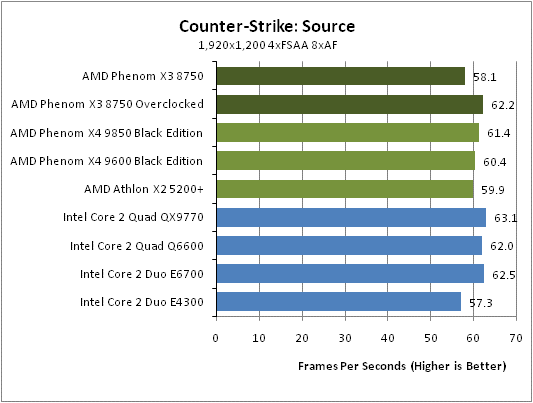
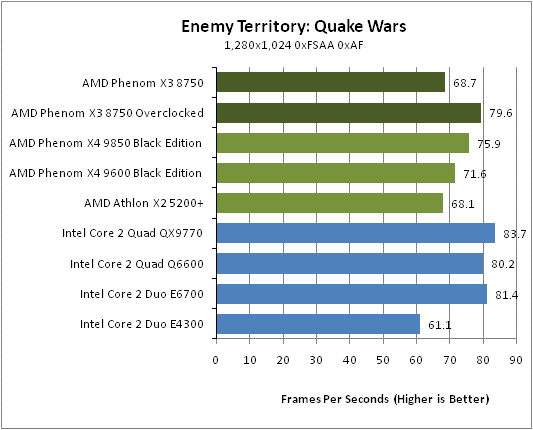
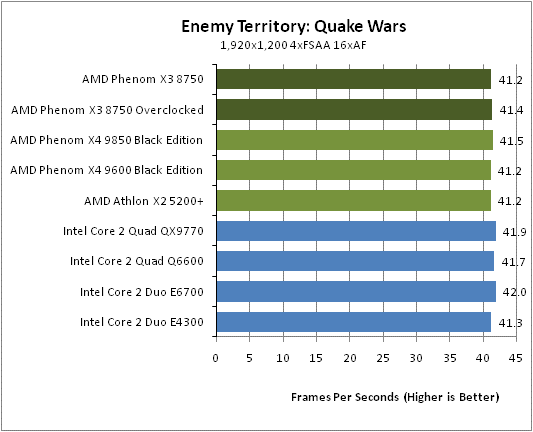
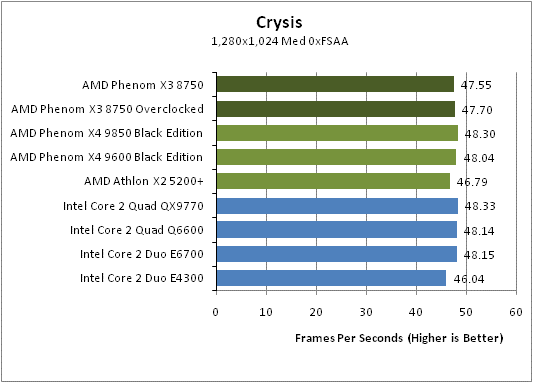
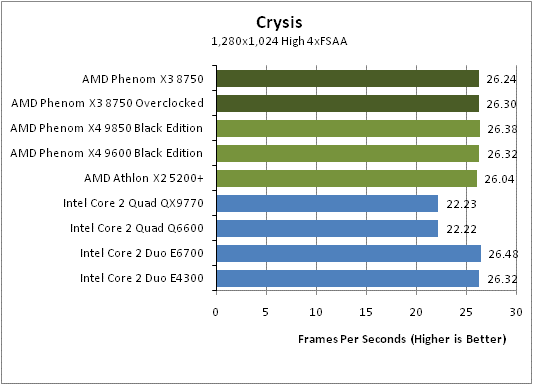
Trusted Score
Score in detail
-
Value 7
-
Performance 7

